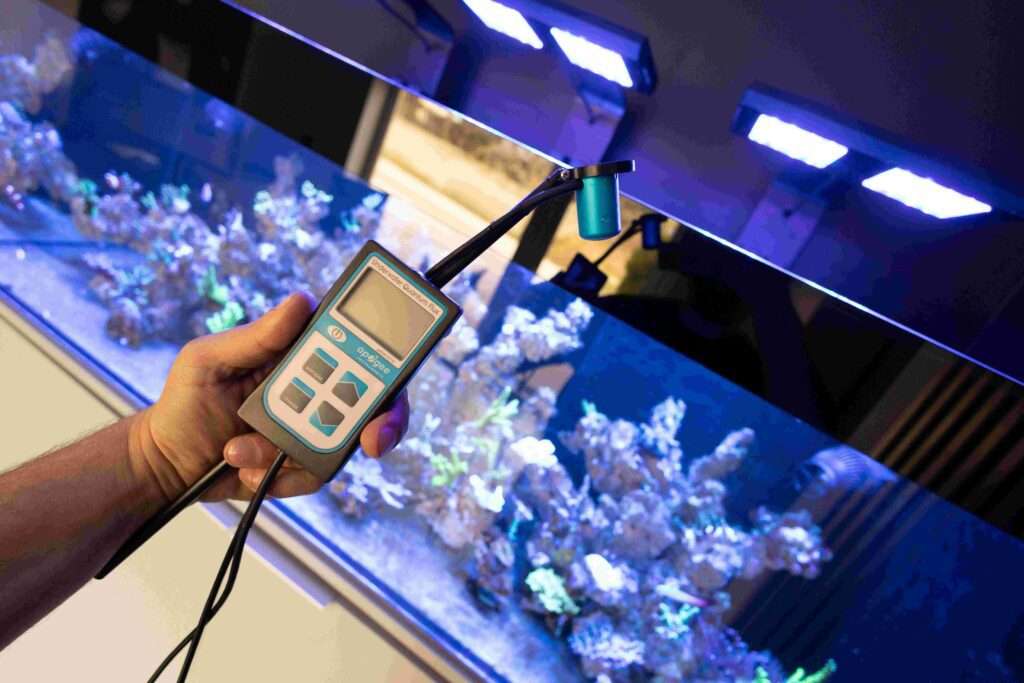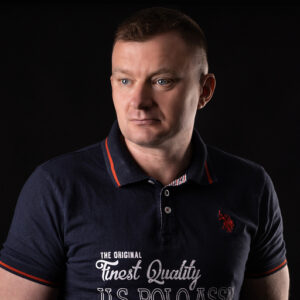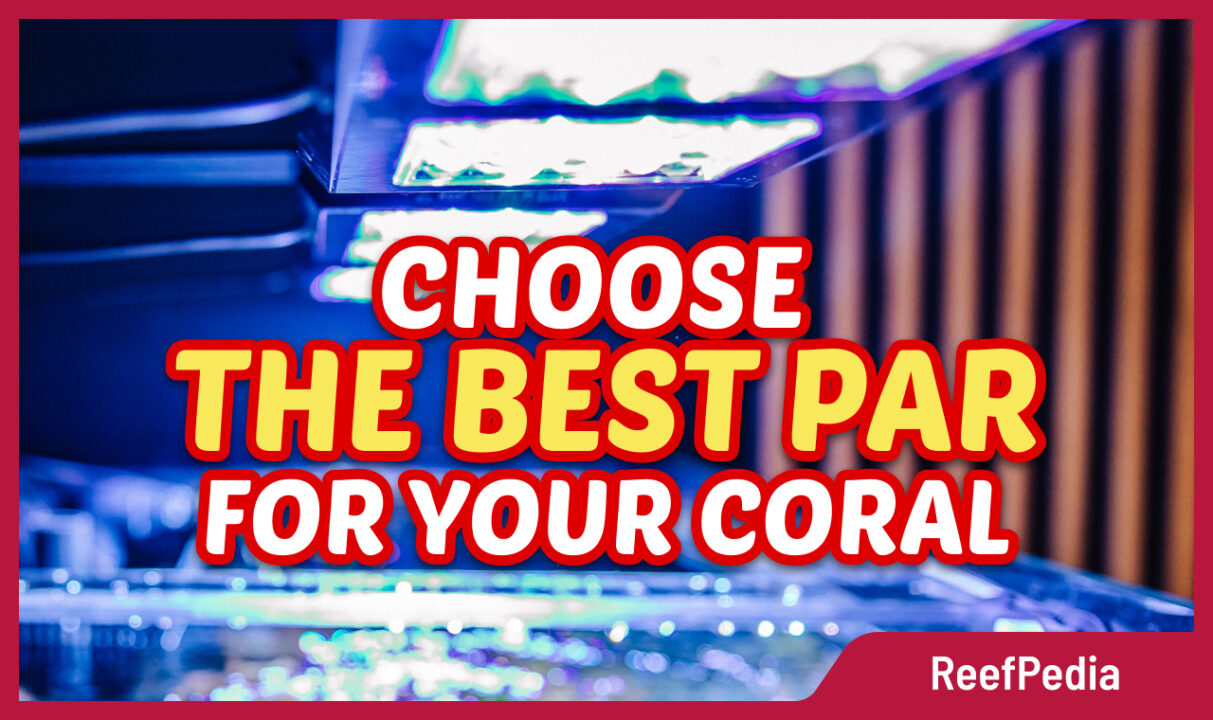The best PAR for coral – understanding the topic
First and foremost, it’s important to note that there is no universal “the best” PAR for any specific coral; this is a complex topic that requires a broader understanding. In this article, I will present the suggested PAR values for various groups of corals. Furthermore, before we begin adjusting the light intensity for our corals, it is advisable to consult two related articles available on ReefPedia.
The first article, titled “Light in the marine aquarium”, offers extensive information on how to properly select lighting for corals.
The second article I recommend explores what corals need to grow. Reading both articles will help you understand coral growth, their requirements, and how light functions within a marine aquarium.
Practical application of PAR knowledge
Firstly, it is essential to acknowledge that if we want our corals to grow quickly and look beautiful, light intensity, or PAR, is just one of the factors to consider. In addition to this, it’s also worth noting that corals have adaptive capabilities, allowing them to grow under various conditions. However, if we decide to provide them with a lot of light, strong water circulation is necessary, as discussed in the previously mentioned article about lighting. The topic of proper coral placement is quite complex, so I encourage reading the article titled “Where to place coral in a marine aquarium“.
Secondly, if we increase the light intensity because we’ve purchased stronger lighting or are moving the coral from a tank with weaker lighting to one with stronger lighting, it’s crucial to acclimatize the corals to the new light conditions. For instance, if we have a new lamp with an acclimatization feature, we should set it up and gradually increase the lighting strength over a period of two weeks to achieve the desired intensity.
Moreover, when adding a new coral, place it lower in the tank and gradually raise it on the rocks so that it receives more light progressively.

The best PAR for specific corals—ranges
Below, in the table, I have presented the ranges of the best PAR for the most popular corals kept in marine aquariums.
| Coral | Min PAR (µmol/m²/s) | Max PAR (µmol/m²/s) |
| Acropora | 200 | 550/700* |
| Cyphastrea | 100 | 200 |
| Discosoma | 50 | 150 |
| Goniopora | 100 | 300 |
| Euphyllia | 150 | 250 |
| Montipora | 100 | 400 |
| Pavona | 120 | 350 |
| Pocillopora | 150 | 400 |
| Chalice | 100 | 350 |
| Porites | 200 | 400/750** |
| Ricordea | 50 | 150 |
| Sarcophyton | 150 | 400 |
| Sinularia | 150 | 400 |
| Stylophora | 100 | 550 |
| Zoanthus | 80 | 150 |
*PAR 700 applies to selected Acropora corals and coral watching
**PAR 750 applies to Purites lutea
Summary
As I mentioned earlier, there is no single, ideal PAR for corals. On one hand, environmental conditions can allow a coral to absorb more energy from photosynthesis. On the other hand, corals have the ability to adapt and can adjust to various conditions within a marine aquarium.
Ultimately, I urge you to keep in mind what I’ve written and treat PAR values only as references, not as definitive standards. The optimal PAR might differ from one tank to another. Consequently, I suggest starting at a lower level and gradually increasing it, while closely observing your corals’ response.
About the author

Marek Protasewicz
Reefkeeping has been my passion for over 10 years now. I love learning. The hobby has taught me many valuable lessons, patience being the best example. Combining work and passion is my path. I run Crazy Coral, a marine aquarium shop, for a number of years. Building this business from the scratch I learnt from my own mistakes at a heavy cost.
Later I managed a project aimed at development of methods for quick growth of Corals in non-natural conditions. The project was carried out by Get Sales, Poland. Presently, I am responsible for distribution strategy at Reef Factory, of which I am a co-founder. The company produces smart devices for marine aquaristics. The last projects I have been involved in are Social Reef and ReefPedia.



